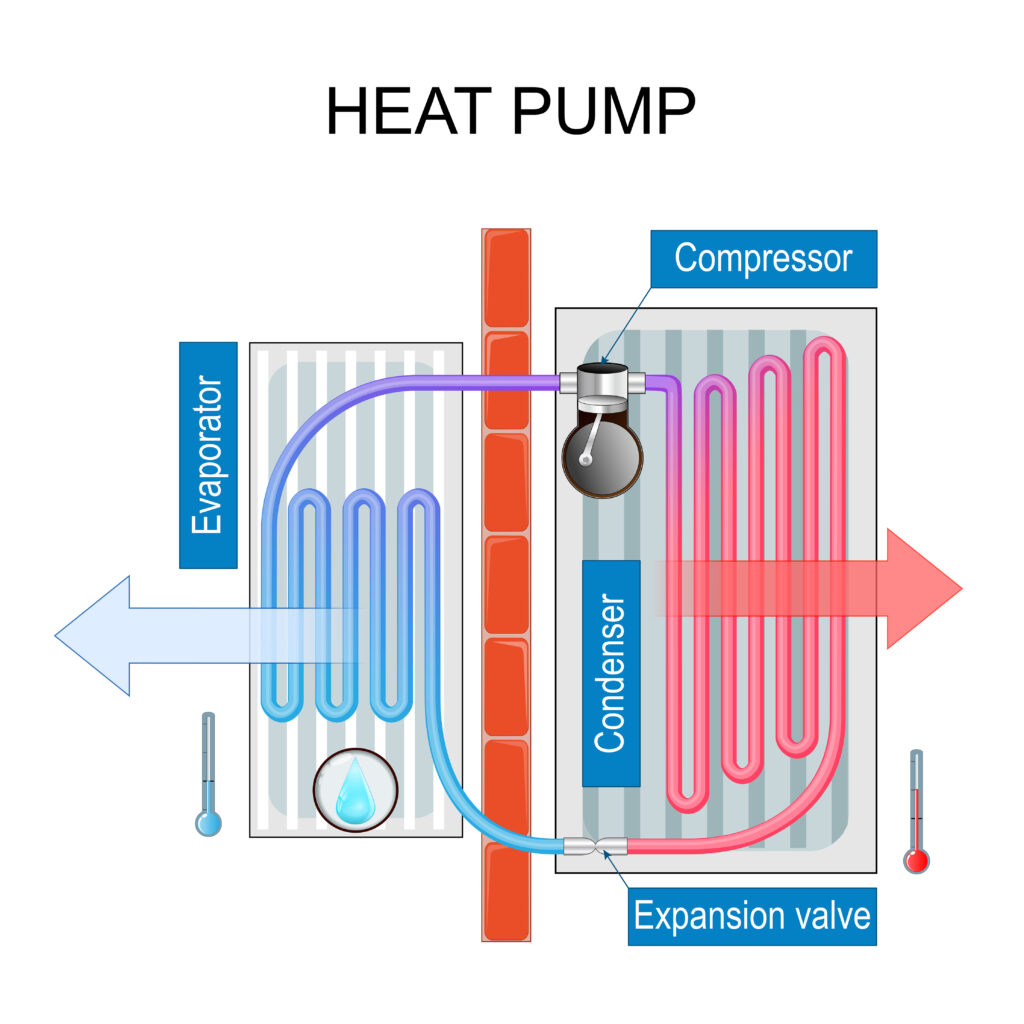Whether the team at Kambo Energy Group is inching down crawl spaces to investigate a home’s heating system or teaching new immigrants how to save energy and money, one thing co-founder Yasmin Abraham knows for certain is this: “The systemic inequities and biases that exist in all parts of society also exist in energy.”
“The amount of energy that you use in your home is directly related to its structure,” she says. “The bigger the home or the more inefficient it is, the more energy it needs.”
If you live in an older building that is draughty or has poor insulation, you’ll need more energy to keep it warm, Yasmin explains. And many lower-income earners tend to live in such homes, she adds, paying high energy bills and struggling to invest in upgrades like new windows or electric heat pumps. She calls this a symptom of energy poverty.
How do heat pumps work?
Condenser
See more →
To heat your house, a heat pump starts by pulling warm outside air. Then, refrigerant coolant in the compressor further increases the temperature and pushes warm air into your home.
Heat pumps are efficient because they transfer warm and cool air instead of generating it.
Evaporator
See more →
To cool your home, the heat pump absorbs warm air inside and transfers it outside. The compressor circulates refrigerant to the evaporator, which absorbs heat and releases cool and dehumidified air into your home.
Did you know: A heat pump can be up to 300% more efficient than electric baseboards.
Compressor
The compressor is responsible for taking low-pressure, low-temperature refrigerant vapour from the evaporator coil (inside the house) and compressing it into a high-pressure, high-temperature gas. This compressed gas is then sent to the condenser coil (outside the house) to release heat.
Expansion valve
The expansion valve, also known as a metering device, is located between the evaporator and condenser coils and serves to regulate the flow of the refrigerant, helping maintain the efficiency of the heat exchange cycle within the heat pump system.
Dr. Vikas Menghwani, an assistant professor of teaching in the Department of Earth, Environmental and Geographic Sciences at the University of British Columbia, shares that if you can’t afford the services needed to meet your energy needs (like keeping your home at a healthy temperature year-round), you’re considered energy poor.
The question, then, Dr. Taco Niet, an assistant professor in the School of Sustainable Energy Engineering at Simon Fraser University, adds, is “How do we bring people suffering from energy poverty up in a just and effective way as we move to a less carbon intensive energy system?”
In other words, how do we achieve energy equity (which Dr. Menghwani describes as “fair distribution of the costs and benefits of energy”) while transitioning to renewable energy and away from fossil fuels?
Not every home can make the transition right away. In fact, most — especially in lower-income, rural, remote, and Indigenous communities — can’t, Yasmin says.
Installing solar panels or making energy efficient swaps is expensive. And often, solutions that encourage such swaps, like Canada’s Greener Homes grant (which is ending soon) or similar retrofit programs, are only available to homeowners, making them inaccessible for the one-third of Canadians who rent.
Many communities “don't have an energy efficiency crisis,” Yasmin says. “They have a housing crisis.”
Kambo Energy Group develops solutions with Indigenous nations, lower-income households, and immigrants, and they focus on “improving housing first and foremost.”
Within those solutions, they’re also reducing energy poverty and greenhouse gases, Yasmin says. “It's a great example of addressing the needs of the community first — climate and greenhouse gas reduction goals come as a co-benefit of our work.”
Organizations like Kambo Energy Group and Ecotrust are on the frontlines working towards energy equity, but we also need government action. We need “interconnected policies” that address energy’s intersections with poverty, health, and social justice, Dr. Niet says.
Like prioritizing lower-income households when designing green grants or retrofit programs Retrofit programsInitiatives that aim to make existing homes or buildings more energy-efficient and environmentally sustainable, like installing energy-efficient appliances, solar panels, better insulation or upgraded windows. Retrofits can contribute to addressing issues like energy poverty by making homes more affordable to maintain and reducing the environmental footprint, but people in BC often face barriers to these programs.Learn More , Dr. Menghwani adds. And developing energy security plans for remote communities that are dependent on diesel generators.
The goal, Dr. Niet says, is energy justice — “a future where there's a just distribution of access to the energy services we need to live a good life.”
Curious for more science behind climate change and social justice?
Explore solutions for regenerating our planet at Change Reaction.

